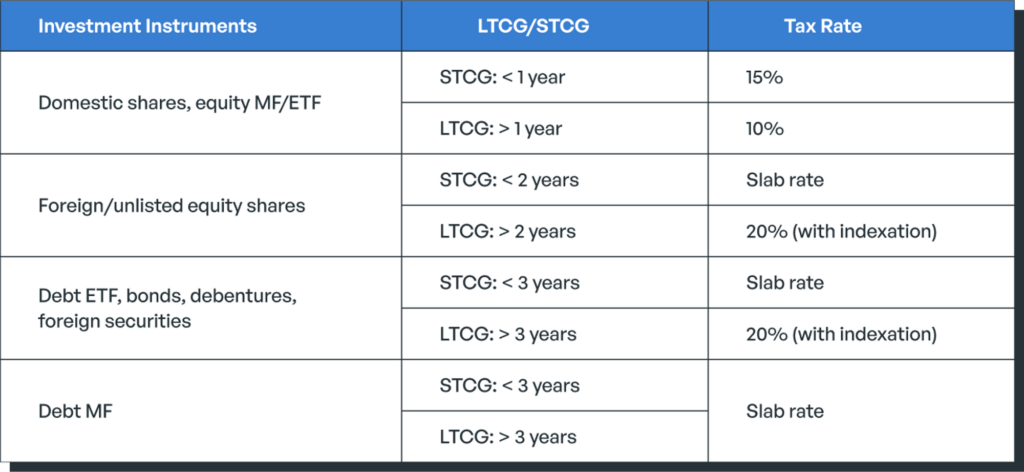One of the finest methods to increase money for many years has been to buy in stocks and hang onto them for the long run. The introduction of online brokerage accounts in Canada has made stock trading far easier for novices, who previously found it to be laborious.
Thousands of stocks can be purchased and sold from the comfort of your home, and when you utilize a commission-free stock broker, you can do it for free or very little.
Buying individual stocks through internet brokers is not the only approach to invest in stocks or other securities. Exchange-Traded Funds (ETFs) are another way to own equities; they can be bought via a robo-advisor or a brokerage platform.
Are you considering making Canadian stock purchases? This book addresses stock portfolio taxation, the finest stock trading platforms, the advantages and disadvantages of purchasing stocks, and more. For novice stock purchases in Canada, we suggest Questrade or Qtrade.
How To Invest in Stocks in Canada
The process of becoming an investor in the stock market in Canada is now the simplest it has ever been.
You can open an online brokerage account and begin trading stocks with little money. Although $100 can be used to purchase stocks, we advise saving a little more to avoid paying trading fees that mount up when you make several smaller transactions.
We shall list any minimum investment requirements for brokerage platforms in this article.
These are the main actions a novice investor in the stock markets should take:
1. Open an Online Brokerage Account
Self-directed or “Do-it-yourself” investors are also those who buy equities straight through a broker.
Choosing a stock with this method means doing your own investigation. Asset allocation and diversification of your investment portfolio are also your responsibilities.
Canadian internet brokerage platforms range from small independent discount brokers to large bank-owned brokerage companies.
Trading fees and charges can be greatly reduced with discount brokers like Wealthsimple Trade and Questrade.
2. Choose an Investment Account
Investing in registered or non-registered accounts is possible for Canadians. Frequently used registered investment accounts consist of:
Investing and earning tax-free profits indefinitely is possible with a tax-free savings account (TFSA). Retirement is one of the short- and long-term goals for which you can save with this account.
Canadians eighteen years of age and older are subject to a yearly contribution cap set by the government. The TFSA contribution limit is $7,000 for 2024 (it was $6,500 in 2023 as well).
An RRSP is a retirement savings account that postpones income taxes until you take withdrawals.
To a maximum of 18% of your income from the prior year, you can donate. The maximum RRSP contribution amount for 2024 is $31,560 ($30,780 in 2023).
A child’s post-secondary education can be saved for with the Registered Education Savings Plan (RESP), an investment account. Apart from your donations, the government offers free grant money of up to $7,200.
Here are the top RESP investments.
For either personal or commercial reasons, you can also invest your stocks in a non-registered account.
3. Analyze Stocks and Invest
It is now important to perform your homework before purchasing a stock after determining on the account you choose to invest in.
Fundamental and technical analysis are two main categories of stock analysis, depending on your goals—growth or value.
Company statistics are used in fundamental analysis to ascertain the financial health, intrinsic worth, and growth potential of the company.
Some basic stock performance indicators are obtained from the company’s financial statements (income, cash flow, and balance sheets):
- EPS, or earnings per share
- P/E, or price to earnings ratio
- Distribution percentage
- RoE, or return on equity
- Total Debt to Equity Ratio
- PEG, or Price to Earnings Growth, ratio
Here, management of the company, its industry competitiveness, branding, intellectual property, and other considerations are also at work.
Using previous price patterns and charts, technical analysis projects the future price of a stock. Day traders utilize this analytical technique to decide what to buy and sell.
Popular technical analysis indicators include:
- Support and resistance levels
- Moving averages
- Relative strength index
- Trend channels and several others
You can utilize a stock screener or obtain charting tools through brokerage systems.
You might easily become lost in analysis of which stock to purchase. Analyzing a stock/company and making future predictions is an endless task.
Fundamental analysis should be the main goal for beginners, as should knowing the purpose and future prospects of a corporation. Sustain simplicity.
How To Buy Stocks Online in Canada

We go over Canadian stock trading online brokerage platforms below.
Apart from these low cost brokers, you may also use a full-service brokerage company or buy stocks straight from the company via dividend reinvestment plans (DRIPs) or direct stock purchase plans (DSPPs).
Best Online Broker: Questrade
- Accounts offered: Personal non-registered, TFSA, RRSP, RESP, margin, and corporate accounts.
- Minimum investment: $1,000
- Trading fees: 1 cent per stock; minimum $4.95 and maximum $9.95 per trade (ETF purchases are free).
- Promotion: Get a $50 trading fee rebate when you fund your account with $1,000 min. and start trading.
- Best for: Seasoned traders and beginners looking to invest in a variety of assets.
- Is it safe?: Yes, your account is protected by CIPF and private insurance.
- Cons: Stock purchases are not commission-free; a minimum of $1,000 to start investing.
- Learn more: Get more details in the Questrade review.
Best Customer Service Broker: Qtrade
Trade stocks, ETFs, GICs, options, new issues (IPOs), mutual funds, and bonds via the independent brokerage platform Qtrade.
- Accounts offered: RRSP, RSP, TFSA, margin, personal and corporate investment accounts.
- Trading fees: $8.75 per trade and $6.95 for active investors.
- Other fees: $25 quarterly fee if your account is less than $25,000.
- Promotion: Get a $50+ signup bonus
- Best for: Customer support
- Is it safe?: Yes, your account is protected by the CIPF.
- Cons: High trading commissions; commission-free ETF trading limited to 100+ select ETFs.
- Learn more: Get more details in this Qtrade review.
Wealthsimple Trade
Top commission-free stock trading platforms in Canada are Wealthsimple Trade. For novice stock traders, it is fantastic.
Fractional share trading is another feature of this platform that lets you purchase tiny amounts of pricey equities like Apple, Tesla, and Amazon.
- Accounts available: Personal investment account, TFSA, and RRSP.
- Minimum investment: None
- Trading fees: No trading commissions ($0); $10 monthly fee for USD account and real time data
- Best for: Beginner investors
- Is it safe?: Yes, your account is protected by the Canadian Investor Protection Fund (CIPF).
- Cons: Currency exchange fee applies to USD trades unless you upgrade to a Plus account; lacks advanced trading tools.
- Learn more: Read our Wealthsimple Trade Review.
Big Bank Stock Trading Platforms in Canada
While their costs are greater, if you trade frequently, you might be eligible for reductions. In order to avoid inactivity penalties, you might also have to keep a minimum account balance. Any of these sites allows you to make TSX (Toronto Stock Exchange) investments.
A. CIBC Investor’s Edge
Canadian Imperial Bank of Commerce (CIBC) provides the brokerage platform CIBC Investor’s Edge. This broker can be for you if you are seeking for a stock trading platform operated by large banks.
- Accounts offered: TFSA, RRSP, RESP, margin, personal and corporate non-registered accounts.
- Trading fees: $6.95 commission per trade (stocks). Students pay $5.95/trade and active traders (150+ trades per quarter) pay $4.95/trade.
- Other fees: A $100 annual fee if the registered account balance is $25,000 or less; or $10,000 or less for non-registered accounts.
- Cons: The trading fee is competitive for a big bank but higher than our top two picks.
B. TD Direct Investing
TD Direct Investing is TD Bank’s brokerage service and among the first stock trading systems to be available in Canada.
- Accounts offered: TFSA, RRSP, RESP, and margin accounts.
- Minimum investment: None
- Trading fees: $9.99 per trade (stocks). Active traders with 150+ trades per quarter pay $7/trade.
- Other fees: If your account balance is less than $15,000, a $25 inactivity fee is charged per quarter.
- Cons: Commission rates are high at $9.99 per trade.
C. RBC Direct Investing
RBC Direct Investing is the brokerage division of the Royal Bank of Canada (RBC). You can use the platform to trade stocks, ETFs, mutual funds, options, and bonds. It also offers a demo practice account.
- A low-cost wealth manager, sometimes known as a robo-advisor, is another way to buy ETFs.
- Because robo-advisors handle all of the research on your behalf, investing is made easier. And they:
- Identify your investment goals, risk tolerance, and investment timeframe.
- Offer a variety of investments that would suit your requirements.
- When needed, automatically rebalance your portfolio.
- Look after reinvesting dividends and offer free financial guidance.
- Make frequent little contributions easy (dollar-cost averaging)
H. Investor Line at BMO
Bank of Montreal (BMO) runs this trading platform. Trading stocks, ETFs, mutual funds, options, GICs, and bonds is possible for both novice and seasoned traders.
Offern accounts include personal and business non-registered accounts, margin, RRSP, TFS, and RESP.
Trading charges are $9.95 each transaction.
Additional fees: Should the balance of your non-registered account be less than $15,000. a $25 fee will be assessed each quarter. An annual fee of $100 is assessed to registered accounts for amounts less than $25,000.
Cons: Higher trading commissions than those of less expensive options.
M. Investing with RBC Direct
The brokerage arm of Royal Bank of Canada is called RBC Direct Investing. Options, bonds, mutual funds, stocks, and ETFs can all be traded on the site. There’s also a practice account demo available.
Offered accounts include margin, TFSA, RRSP, RESP, personal and corporate non-registered accounts.
Trade commissions are $9.95 each stock trade. Trades made by active traders cost $6.95.
Other fees: Should your investment balance be less than $15,000. A $25 maintenance fee is assessed each quarter.
Cons: Trading commissions are expensive—$9.95 each transaction.
You pay a nominal yearly management charge in return for these advantages (less than what you could spend for a similar mutual fund).
Our top pick in Canada for a robo-advisor service is Wealthsimple. A trouble-free investing experience costs between 0.40% and 0.50% yearly.
Open an account and receive a cash bonus (special offer for our readers).
- Accounts offered: RRSP, TFSA, RESP, and margin accounts.
- Trading fees: 1 cent per share; minimum $1.99/trade and maximum $7.99/trade; Active traders pay a flat $3.99 fee per trade.
- Other fees: A $24.95 administrative fee applies per quarter if your account is less than $5,000.
- Cons: Advanced trading platform is pricy.
How to Invest in Stocks Using a Robo-Advisor
Investing in an index ETF portfolio, or professionally managed basket of companies, is an alternative to purchasing individual stocks and doing the necessary research to choose equities with confidence.
An Index ETF provides industry and geographic area diversification and can hold thousands of equities. Purchasing individual equities makes it challenging to reach this degree of diversity, or risk mitigation.
ETF purchases can be made straight from your brokerage account. Unless you invest using all-in-one ETFs like Vanguard’s VGRO or VBAL, this strategy may require you to rebalance your portfolio one to two times a year.
- Help you identify your risk tolerance, investment objectives, and how long you plan to invest
- Recommend an investment portfolio that matches your needs.
- Automatically rebalance your portfolio when required
- Take care of dividend re-investing and provide free financial advice
- Make it easy to contribute small amounts regularly (i.e. Dollar-cost averaging)
Types of Stocks
There are two primary categories into which stocks fall:
Common Shares: Investors most often own these kinds of equities. Purchasing a common share makes you a portion owner of the company. This entitles you to vote on company-related issues like director elections.
The assets and earnings (dividends) of the company are also yours as a shareholder. Dividends are not assured, though, as bondholders, preferred shareholders, and other creditors receive payment first in the event of a firm failure.
Preferred Shares: Preferred shareholders get a set dividend amount per share and possess shares with a higher claim to profits/assets. Preferred shareholders are paid out ahead of “common” shareholders in the event of a corporate bankruptcy. Preferred shares, meanwhile, frequently lack voting rights.
Because preferred shares possess traits of both stocks and bonds, they are also known as hybrid securities. Preferred share categories include fluctuating rates, rate resets, retractable/convertible, and perpetual shares.
While stock funds can be classed according to the kinds of firm stocks held by the fund, a stock can also be classified according to the company issuing it:
- Company ownership: private or public
- Type of company: blue-chip, income, growth, defensive, value, cyclical
- Market capitalization: large-cap, middle-cap, and small-capitalization shares
Taxes and Investment Returns on Stocks
Divide yield and payout ratio are two performance indicators that investors use to evaluate a company’s strength and the value of its stock.
Dividend yield calculates dividend as a percentage of current stock price; dividend payout ratio describes how much of the company’s profit is distributed to shareholders as dividends.
Monthly, quarterly, semi-annual, or yearly dividend payments are all possible. A business may also opt against paying dividends if it is having financial difficulties or if it would rather to reinvest earnings in expanding.

Selling stocks when the price rises is another way a shareholder might profit from them. You get a capital gain when you sell a stock for more than you paid for it. You suffer a capital loss if the other way around.
Your stocks are taxed as follows if they are kept in a non-registered account:
Capital Gains: You pay your marginal tax rate on 50% of your capital gains as income. Up to three years can pass between capital losses and capital gains. Indefinite carryover of capital losses is another option.
Dividends: Taxable and grossed up dividends are those from Canadian firms, for example. You may claim the dividend tax credit to save paying taxes twice. Foreign company dividends are included in your income and subject to your marginal tax rate.
You do not pay taxes on income earned if you invest in stocks inside a registered account, such an RRSP or RESP, until you take money out of your account. There are no income taxes owing on a TFSA.
The Advantages of Stock Investing
Either buying individual stocks or investing into a pool of equities held in an equity mutual fund or exchange-traded fund are two options for stock investing. Among the benefits of stock investing are:
Capital Gains: If a company does well, its value and stock price go up, resulting in capital appreciation for the investor.
Dividends: If you buy shares in a company that pays regular dividends, you get a predictable stream of income that can supplement other income from fixed-income/money-market securities.
Liquidity: Stocks are usually traded on stock exchanges that are very liquid, i.e. you can buy or dispose of them very easily without significantly affecting the price of the stock.
Easy Diversification: Although stocks are riskier than the other major asset classes, you can invest in a portfolio of equities that are diversified across industries, sectors, and countries in order to lower your risks. This diversification can be easily accomplished using equity mutual funds/ETFs.
Favourable Taxation: Only 50% of capital gains are taxed. Additionally, dividends get a preferential tax treatment compared to interest income (from bonds and GICs) that is 100% taxed at the investor’s marginal tax rate.
Outperform Inflation: Long-term returns on stocks tend to be above the inflation rate. Thus, an investment in stocks gives you a chance to grow your portfolio and generate real returns.
Equities Investing Drawbacks
The stock market may be somewhat erratic, responding to news, rumors, investor moods, and corporate information. Stock prices can be persistently low during economic downturns.
Risk of Total Loss: Once bondholders and preferred shareholders are paid, a corporation may file for bankruptcy and leave nothing for common stockholders. Disappointing earnings or losses can sometimes cause companies to go bankrupt and be unable to pay dividends.
Time Consuming: Purchasing individual stocks and assessing each one for its value as well as making sure your “basket” of equities is sufficiently diversified can take a while. To have any hope of success, you must be familiar with the fundamentals of investing, including understanding financial statements and financial ratios like EPS, P/E, and ROE.
Final Thoughts – Stocks and The Risk vs. Return Conundrum
The anticipated return on investment increases with increasing risk. Furthermore, this return is not assured.
Riskier than cash or fixed-income assets are stocks, or shares. Investors expect to be compensated for taking on “extra” risk because of their higher risk than they would for less hazardous assets like GICs, Treasury bills, and investment-grade bonds.
According to Morningstar, the S&P/TSX Composite Index (TSX), which measures the long-term annual rate of return of the stock market, returned 9.3% between 1960 and 2018.
This kind of return trounces savings account returns and surpasses fixed-income assets once you account for an average inflation rate of about 3%.

